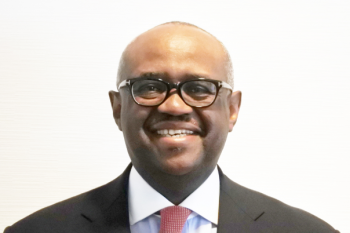Events
Promoting the “Image of Africa”project
— Kenya is the largest Japanese ODA recipient in Sub-Saharan Africa. How do you think Japan’s assistance has contributed to the development of Kenya?
Japan considers Kenya as a pivotal country in its Foreign Policy in Africa. Our capacity to absorb Japan’s development cooperation is high compared with other countries. We are proud that Kenya is the largest recipient of Japanese ODA in Sub-Saharan Africa totaling about ¥550 billion to date. Japan’s continuous cooperation on Kenya’s development has been based on five pillars: Quality Infrastructure Development, Energy, Universal Health, Education, and Agriculture. Kenya is the eighth largest producer of geothermal power in the world. We are developing the Dongo Kundu Special Economic Zone (SEZ) and modernization of Mombasa Port with cooperation of JICA. Mombasa Port is the largest port in East Africa and the gateway to east and central Africa. After the completion of the SEZ, we expect that Japanese companies will set up “shop” which will go a long way in reducing the heavy trade imbalance with Japan.
— As Ambassador to Japan, what activities are you focusing on to strengthen bilateral ties?
Market access of Kenya’s products to Japan is very critical. The TICAD V Yokohama Declaration identified empowering farmers as main economic actors for growth. Kenya produces avocados, pineapples and French beans according to international standards, but cannot export them to Japan due to strict Japanese sanitation standards. The Kenyan side is working to have these sanitation issues resolved and we are hopeful that export of Kenyan fruits to Japan will soon be possible. Kenya is a major tourist destination in Africa and we always welcome foreign tourists including Japanese repeaters. However, the inflow of Japanese tourists is very low due to the current travel advisory for ordinary travel to Kenya. The Embassy hosts regular seminars for Japanese SMEs, etc. Kenya is one of the advanced countries in ICT infrastructure in Africa.Kenya has mobile internet speeds twice the global average at 13.5 megabits per second. ICT is an ideal sector for Japanese investment.As Chair of the African Diplomatic Corp Media, Culture and Tourism Committee, I am promoting the project of Image of Africa in a different perspective, especially to the Japanese public, so we are engaged in people to people diplomacy. In May, we held the second “Ima No Africa” event in Yokohama, as a precursor to TICAD VII. Cultural exchange and sporting activities are also important and moving on well.
— Would you talk about the Kenyan Government’s “BIG Four” agenda? Are there any opportunities in which Japanese companies can cooperate?
The government has prioritized four agenda items through a five-year development plan: manufacturing, affordable housing, food security, and universal health coverage (UHC). The “Big Four” opens new opportunities for Japanese companies investing in Kenya.There are incentives to investors in manufacturing for export diversification. Focused subsectors include ICT, energy, food-processing. Food security is critical issue in Kenya and the government looks at large scale farming. Japan has concentrated on supporting rice production in Africa. In Kenya, Japanese companies are now heavily invested in fertilizer plant and storage facilities, and also are interested in strawberry farming. As to UHC, TICAD VI Nairobi Declaration designated Kenya, Ghana and Senegal as model countries for implementing UHC.The government is promoting resilient health systems, and like Japan, now regional counties have responsibility for UHC.
— The Sustainable Blue Economy Conference (SBEC) was held last November which was co-hosted by Kenya, Canada and Japan. What vision does it have?
Kenya hosted SBEC with over 16,000 participants from 184 countries. We are happy that Japan co-hosted the Conference with us. The theme of the conference was ‘the Blue Economy and the 2030 Agenda for Sustainable Development’. We believe oceans, lakes, rivers and other water resources as common heritage and contributing to sustainable development. The outcome of the conference contains a number of political messages and 191 commitments.If implemented on the required scale, we can maximize the potential of the Blue Economy and accelerate economic growth, job creation and poverty eradication. In response, they can amplify ongoing efforts in protecting and preserving resources for future generations. It should be noted that Kenya effectively banned the use, production and sale of plastic bags.
— Following TICAD VI held in Kenya in 2016, TICAD VII will be held in Yokohama this August. How can Kenya and Japan cooperate on the TICAD process?
Kenya cooperates with Japan in structural economic transformation, resilient health systems and social stability, which are the three pillars of the TICAD VI and contained in the Nairobi Declaration. The Japanese government pledged to provide ¥ 30 billion for high quality infrastructure, universal healthcare projects, and human resource development through further involvement of the private sector, PPP. In addition to more presence of Japanese companies in Africa, we hope to increase access to the Japanese market for African products. As to social stability, Kenya has a program of resolving cross border conflicts in certain areas of Ethiopia and Kenya, with assistance of Japan in addition to the fight against piracy and terrorism. The Kenyan government plans to co-host three side events on Blue Economy, Pre-Nairobi ICPD 25 Summit and the Diaspora during TICAD VII. We are working closely with Japan to ensure a successful TICAD conference.
(Interview by Shu Tamaru, FEC Counsellor)
